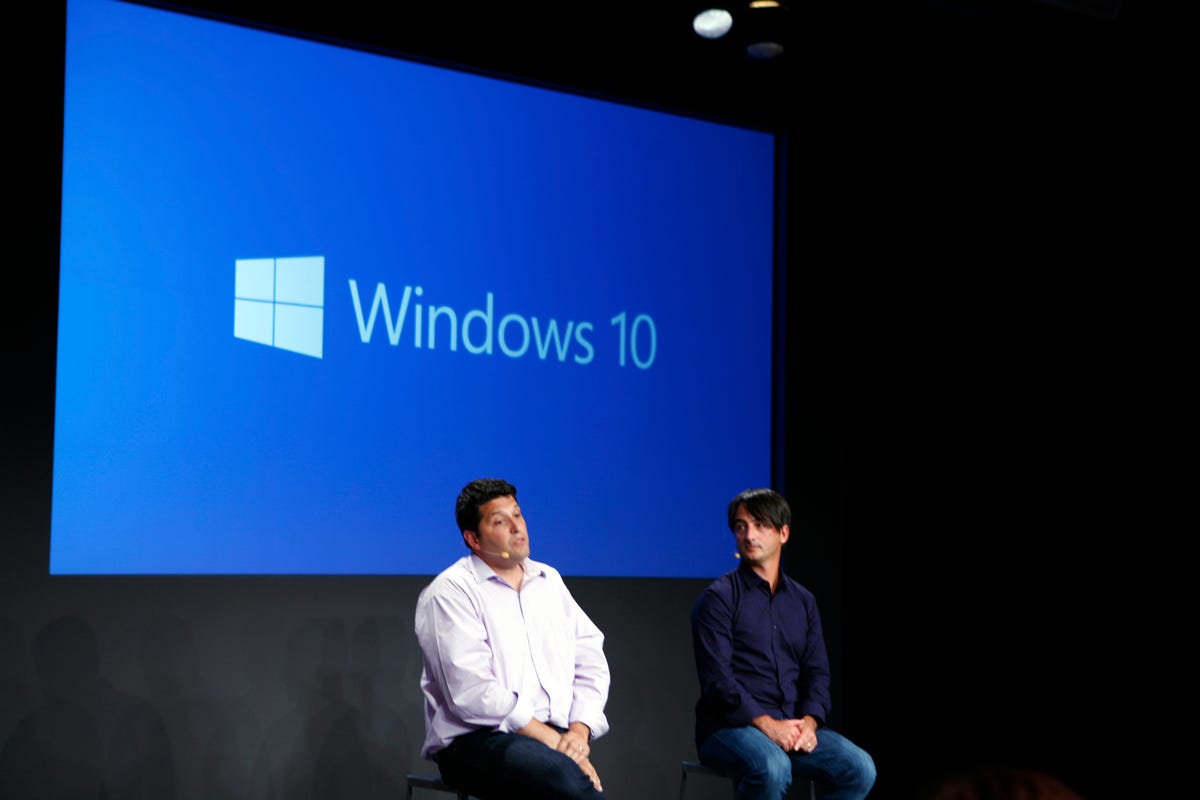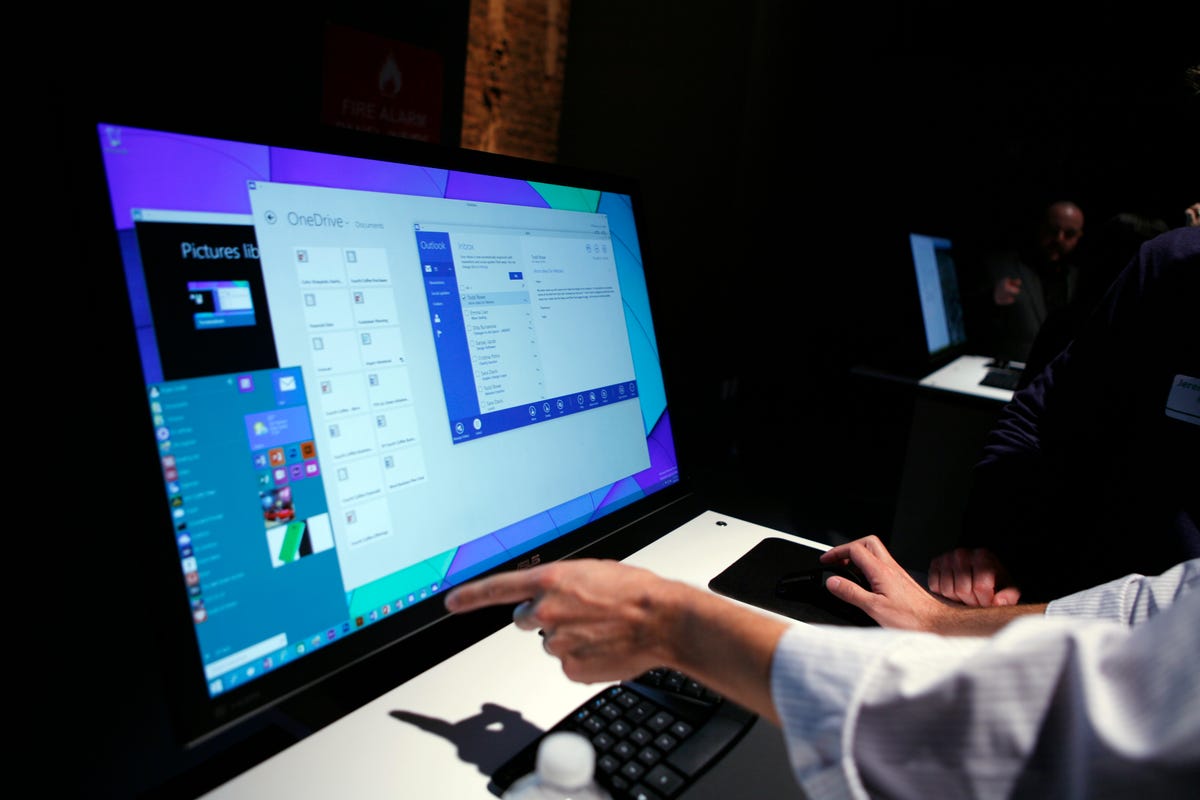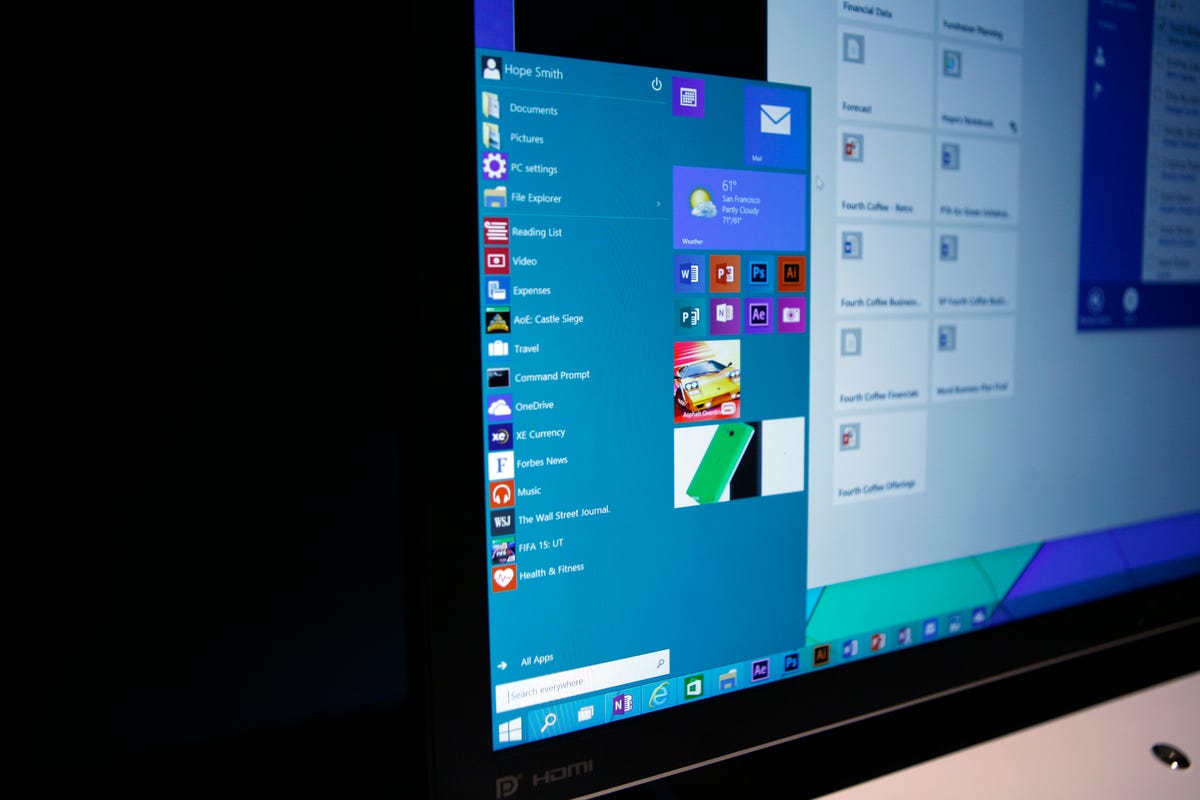
Nick Statt/CNET
SAN FRANCISCO — Microsoft just said no to 9. The follow-on to the current Windows 8 operating system will be known as Windows 10 .
Originally codenamed Windows Threshold, the new operating system essentially does away with the dependency on the tiled “Metro” user interface that Microsoft had attempted to implement across its entire device line, from desktop PCs to Surface tablets and Windows Phone devices. In its place is a combination of the so-called live tiles, present in areas like the new Start Menu, and a more classic Windows experience that aims to please both touch and keyboard-and-mouse users.
Windows 10 is such a substantial leap, according to Microsoft’s executive VP of operating systems, Terry Myerson, that the company decided it would be best to skip over Windows 9, the widely expected name for the next version.
“Windows 10 will run on the broadest amount of devices. A tailored experience for each device,” Myerson said at a press event here Tuesday. “There will be one way to write a universal application, one store, one way for apps to be discovered purchased and updated across all of these devices.”
Related stories
- Windows 8.1 continues to inch along
- Mobile first, cloud first: Microsoft looks to the future
- Microsoft OS chief sees a ‘One Windows’ future (Q&A)
- Microsoft’s ‘Threshold’ goal: Win over Windows 7 holdouts
- Microsoft’s OneDrive to take on Google Drive and Dropbox
Microsoft has spent the better part of two years, since Windows 8’s debut in October 2012, responding to criticism over the direction in which it took the operating system that has long dominated traditional PCs. Windows 8 introduced the touch-prioritized Metro design with live tiles and removed key elements of Windows 7, disrupting the familiar look and feel for long-time Windows users. The changes were representative of an overall acceleration of Microsoft’s unification of its touch-enabled mobile devices with its desktop and laptop software.
Those changes found many critics and detractors.
Windows 8.1, released last year, attempted to address those complaints with the revival of core Windows design and usage properties, such as the Start button. Now, with Windows 10, Microsoft is not quite hitting the reset button on touch, but wants to make sure it does not repeat history in its attempt to take Windows forward.
“We believe that, together with the feedback you provide us, we can build a product that all of our customers will love,” Myerson said. “It will be our most open collaborative OS project ever.”
Taking the stage after Myerson’s introduction was Microsoft’s Joe Belfiore, corporate vice president of operating systems and the current public face of Windows and Windows Phone design and development. He gave attendees a live demo of an early build of Windows 10. Belfiore, too, put the emphasis on a great leap forward.


Nick Statt/CNET
“We want all these Windows 7 users to have the sentiment that yesterday they were driving a first-generation Prius,” he said, “and now with Windows 10 it’s like we got them a Tesla.”
Related Links
- Microsoft’s Surface Studio: A desktop creation station with a magic dial
- Microsoft’s Surface Books get massive battery life boost
Windows 10 combines elements of Windows 8’s forward-thinking design and the familiarity and functionality of Windows 7, still the most popular Microsoft OS. According to Web traffic-tracking firm Net Applications, Windows 7 could be found on 51 percent of desktop PCs in August, compared with just over 13 percent for versions 8 and 8.1 combined.
“It’s easy to say, ‘Oh it’s Microsoft giving up on touch,'” Belfiore said, pointing out the most obvious criticism of the scaled-back Metro interface. “We’re absolutely not giving up on touch. We have a massive number of users who know Windows 7 well and a massive, but smaller, number of people who know Windows 8 well.”
First look at Windows 10 (pictures)






The goal with Windows 10, Belfiore stressed, is to “find UI approaches that use the same mouse and keyboard experience evolving from Windows 7 so the touch users get something natural.”
Belfiore, during his demo, offered insight into what went wrong with Windows 8. The goal of that OS was based on “the effect that two-in-one’s can have for the productivity of Windows to help people get things done,” Belfiore said. Two-in-one devices can shape-shift from laptop to tablet, and Microsoft has hoped that Windows can dominate that dual form factor in a way that competitor Apple cannot, with its separate iPad and laptop lines.
“Windows 8’s focus on touch, the large start screen, the notion of apps running full-screen as they do on tablet devices…that was to salute the idea that this would be more productivity,” Belfiore added. “But we didn’t get it right. With Windows 10, we think we got it right.”


Nick Statt/CNET
The key, Microsoft says, is the idea that Windows 10 can identity the device and change its interface mode, something the company is calling Continuum. That means your software will know when you’re using the OneDrive cloud service or Microsoft Word on a Surface device or a Lenovo laptop and adjust accordingly in a way that will unlock that productivity that Microsoft feels has been eluding its family of devices with Windows 8.
As for Windows Phone, it will follow in the steps of Windows 10, including its naming scheme, but not borrow the same back-to-basics design philosophy. “It will not have a desktop,” Belfiore said, but did not elaborate on what the next version of Microsoft’s mobile OS may look like.
Windows 10 is expected to release in fall 2015. Starting tomorrow, Microsoft will open up the OS to dedicated beta testers under its Windows 10 “Insider Program.”
Myerson refused to talk about the Windows business model following reports earlier this week that Microsoft may make Windows upgrades free, as Apple does with its OS X upgrades. Both executives are also confident that the jump from Windows 8 to Windows 10 will not cause confusion, and that customers will respect its symbolic value.
“It’s a name that resonated best with what we’ll deliver,” Myerson said.
Update at 2:20 p.m. PT: Clarified Windows 10 release and the launch of the OS’s “Insider Program” on October 1.




